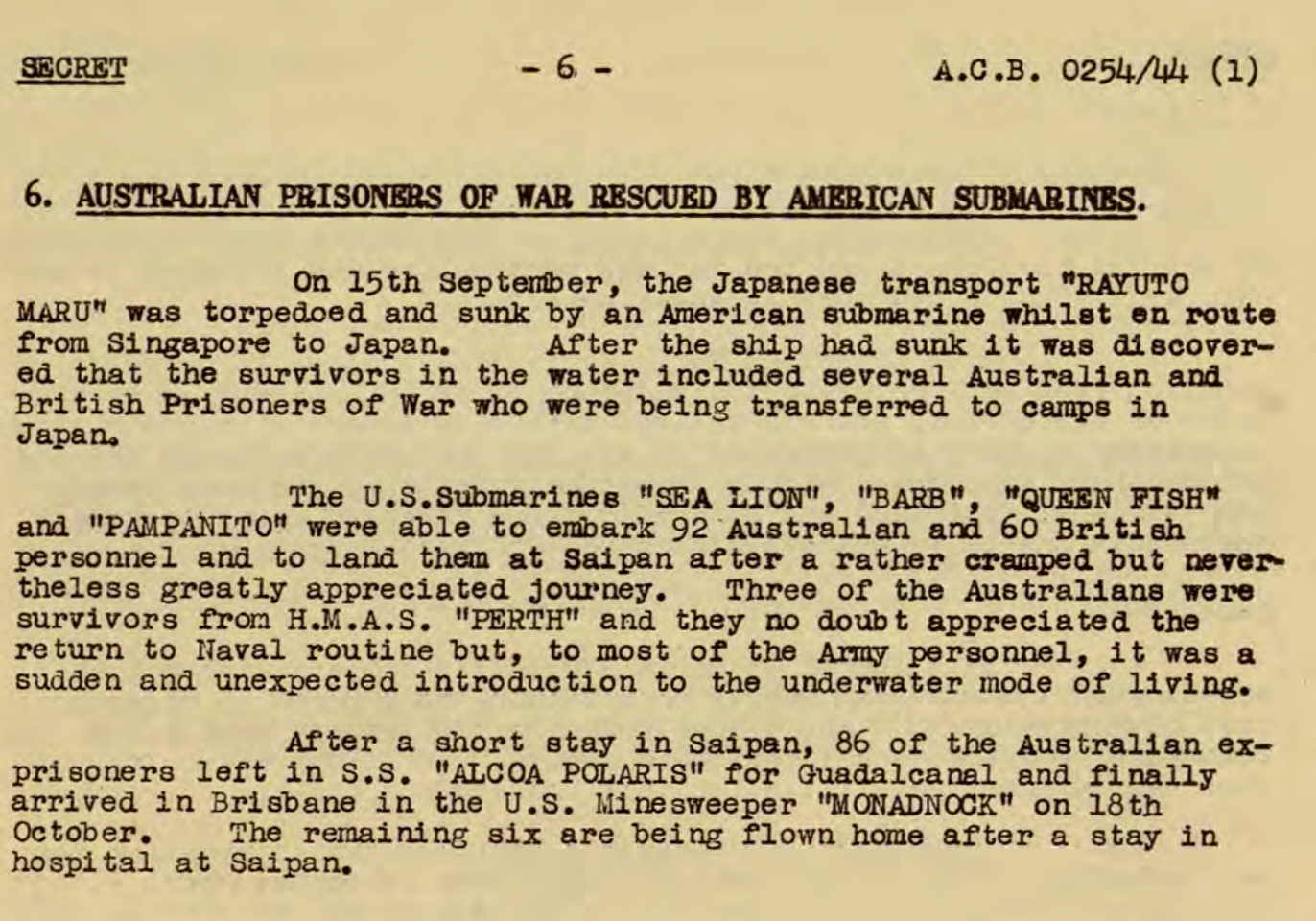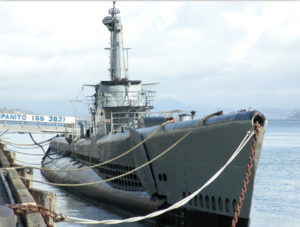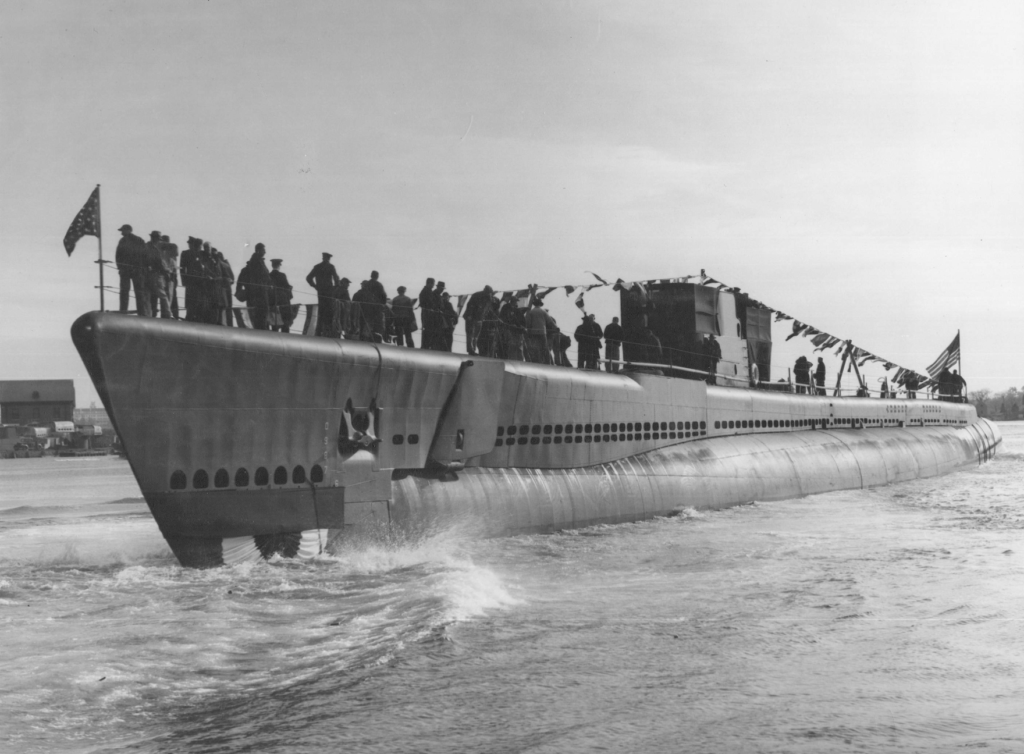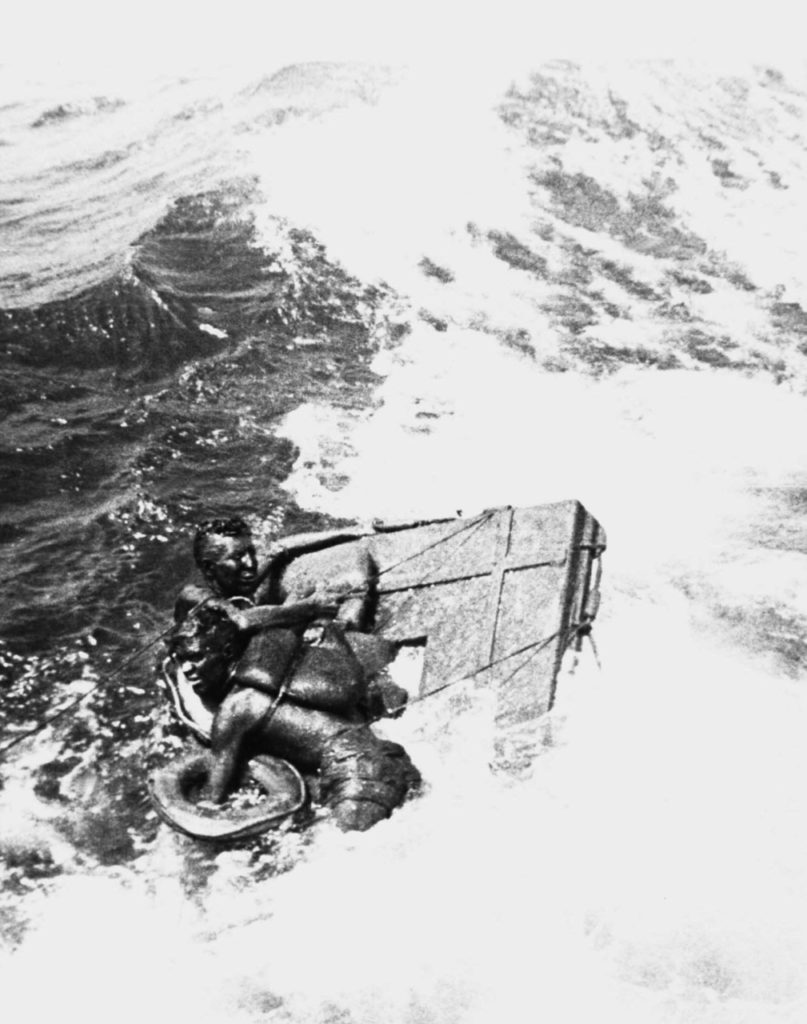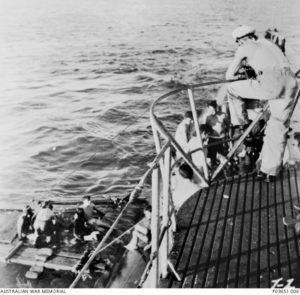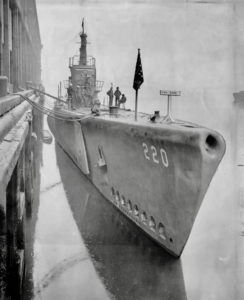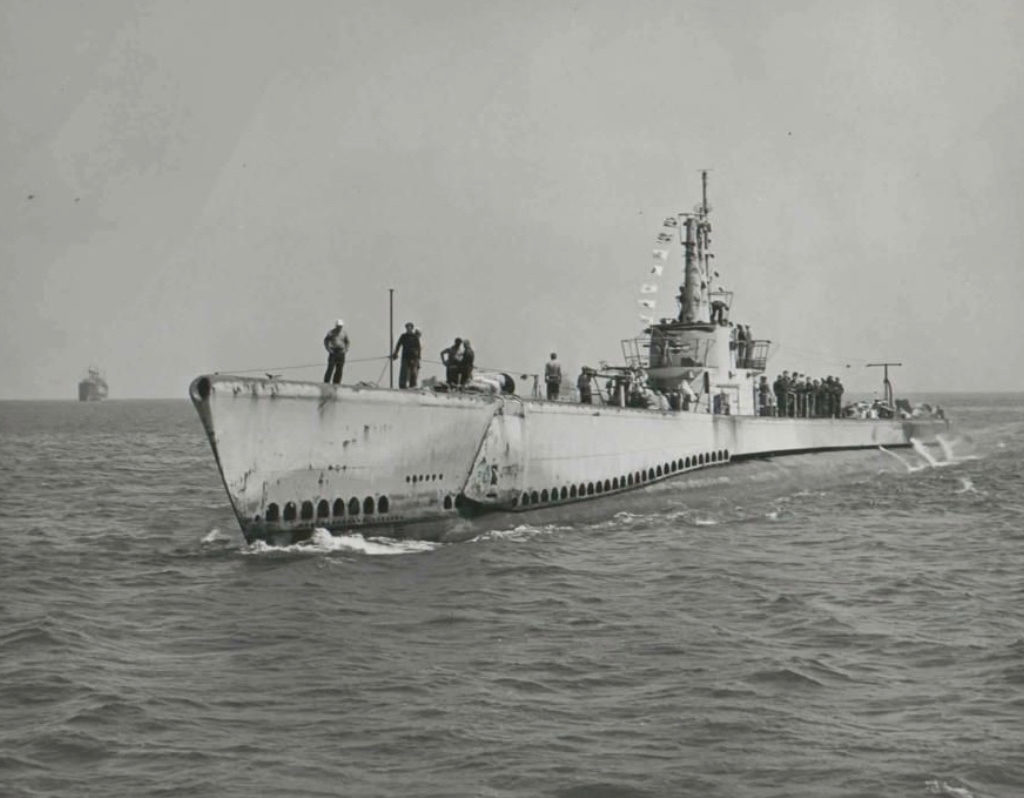THE THIRD WAR PATROL AUGUST 17 – SEPTEMBER 28,1944
AND THE MIRACULOUS RESCUE OF POWS FOUR DAYS AFTER US SUBMARINES ATTACKED AND SANK ‘RAKURO MARU’ 12 SEPT 1944
11 Men from 2/4th were picked up in South China Sea
by same US Submarines which had eatlier attacked the Japanese Convoy including ‘Rakuyo’ Maru 12 September 1944
3 POWs from 2/4th were picked by Japanese Naval Corvette, taken to Japan
38 men from 2/4th perished when ‘Rakuyo’ Maru was sunk
In September 1944 USS Pamanito, USS Growler and USS Sealion were part of a ‘wolfpack’ heading for Luzon Strait north of the Phlippine Islands – the area was code-named ‘Convoy College’ by the Allies. Large numbers of Imperial Japanese Convoys converged here on their journey north to Japan.
Previously submarines had patrolled the seas singularly. Now it was found wolf-packs were better organised, protected and more efficient. They rarely used radio contact and would rendezvous at pre-arranged times, then communicating with signal lights and megaphones.
On the night of 9 September 1944 the wolfpack known as ‘Busters’ was notified of a message from Japan intercepted and decoded by Fleet Radio Unit Pacific with route details of the Convoy and provided the next day’s noon position. The ‘Busters’ were ordered to rendezvous on the night of 11th September at the given position. Another wolfpack in the region known as the ‘Eradicators’ included USS Barb and USS Queenfish was ordered to be a backstop to ‘Busters’ and to also move in on the convoy.
The next day, on 12th September 1944 two of Sealion‘s torpedoes hit ‘Rakuyo Maru’ – one amidships and one in the bow. The POW ship took 12 hours to sink. This allowed the POWs some time to seek food and water from the sinking ship and make rafts. The Japanese guards had immediately left the ship using most of the lifeboats. When the surviving Japanese were rescued it was made very clear to the POWs their lives would not be.
Additional reading about ‘Rakuyo Maru’
The survivors looked for floating devices; sometimes lashing pieces together for makeshift rafts sometimes they found rafts deserted by Japanese. Covered with oil men gradually succumbed to the sea elements – salt, wind and mostly thirst. The nights were worse with the fatigued POWs, some with injuries drifted into sleep and silently slipped away from their rafts.
How to keep their spirits up? Who would rescue them? It was not difficult to lose faith. The worst was when the men succumbed to thirst and drank salt water. The results were hallucinations and sometimes behaviour which threatened those living. It was the fourth day following the sinking of ‘Rakuyo Maru’ when a miracle occurred – the ‘Pampanito‘ returned to the area of the attack just to look around. Just by chance floating amongst the debris their observer discovered there were survivors! It was not until the submarine got within verbal exchange distance did the crew of ‘Pampanito’ realise there were Australian and British POWs in the water ‘who had to be rescued’. They had no idea how many.
The urgency was so great – these men had been in the ocean three nights and it was now the fourth day!
‘Pampanito’ broke their rules and absolute code of silence and messaged to other submarines in the vicinity. Three other submarines returned to the scene to pick up survivors. The four submarines rescued 159 survivors of the ‘Rakuyo Maru’ and 73 men were pulled aboard the –Pampanito.’
USS Pampanito, San Francisco – a museum attracting large numbers of visitors.
USS Pampanito with rescued POWs onboard.
Pampanito picked up 73 survivors from South China Sea, including 5 men from 2/4th. It called in three other submarines to pick up as many POWs as possible.
COCKING, Alfred John ‘Jack’ WX16369
PASCOE, Thomas Anthony ‘Tom’ WX7409
PICKETT, Harry WX9095
WINTER, Alfred Daly ‘Alf’ WX8110
WINTER, Walter Victor ‘Wally’ WX10373 (not related to above)
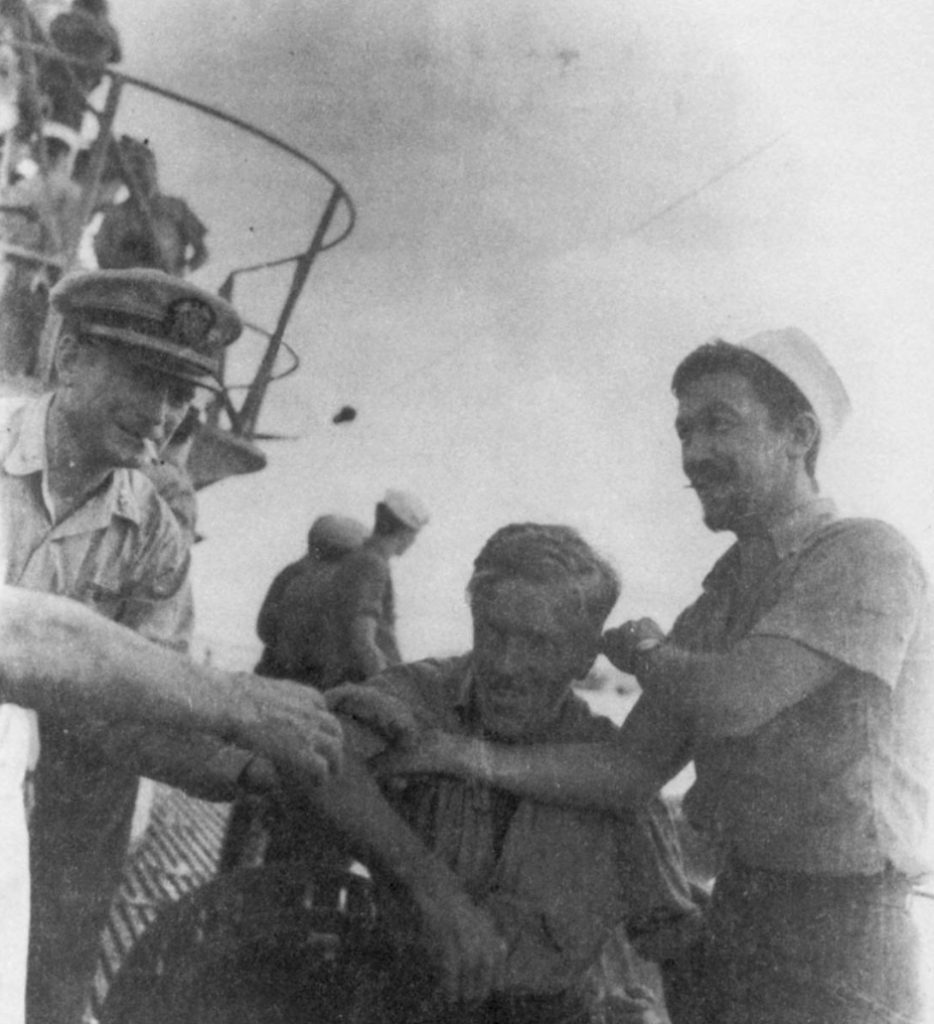
Rescued by USS ‘Queenfish’ from South China Sea, after Rakuyo Maru sank:
BUNKER, Harold Thomas (Harry) WX9223
CROSS, Frederick Victor ‘Vic’ WX7268
BEILBY, Philip James ‘Phil’ WX12765. Please read Beilby’s story.
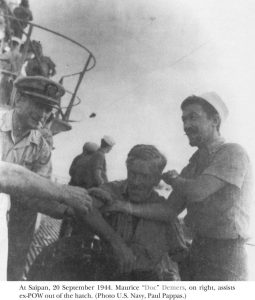
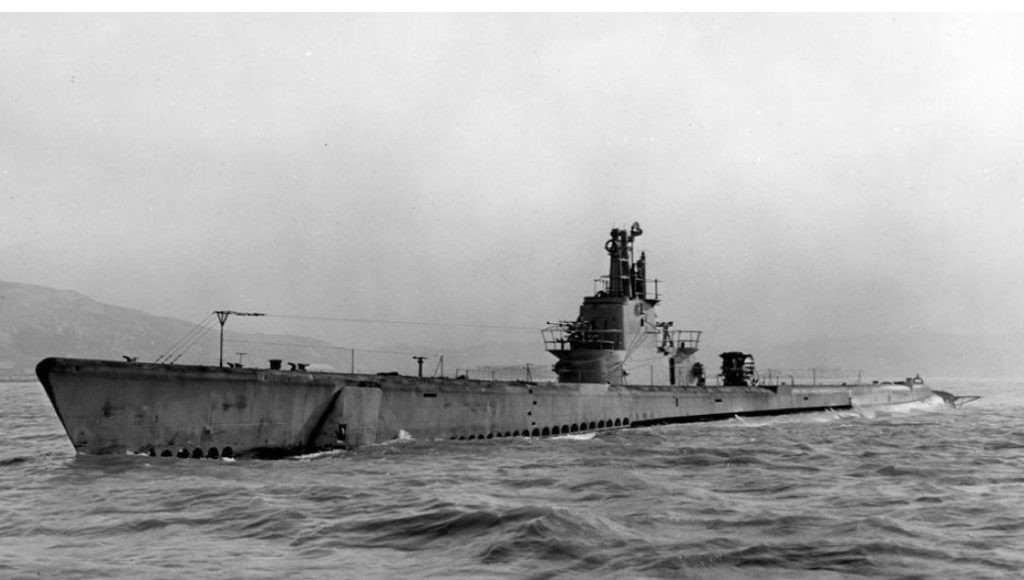
USS Barb picked up a group of POWs which included ‘Doug’ Hampton. Please read further.
Rescued by USS ‘Barb’ from South China Sea, after Rakuyo Maru sank:
HAMPSON, Robert Douglas ‘Doug’ WX7123
Rescued by USS ‘Sealion’ from South China Sea, after Rakuyo Maru sank:
KEARNEY, Laurance Daniel “Laurie’ WX17452
SING, Alfred ‘Alf’ WX16424
Below: survivors aboard USS ‘Sealion’

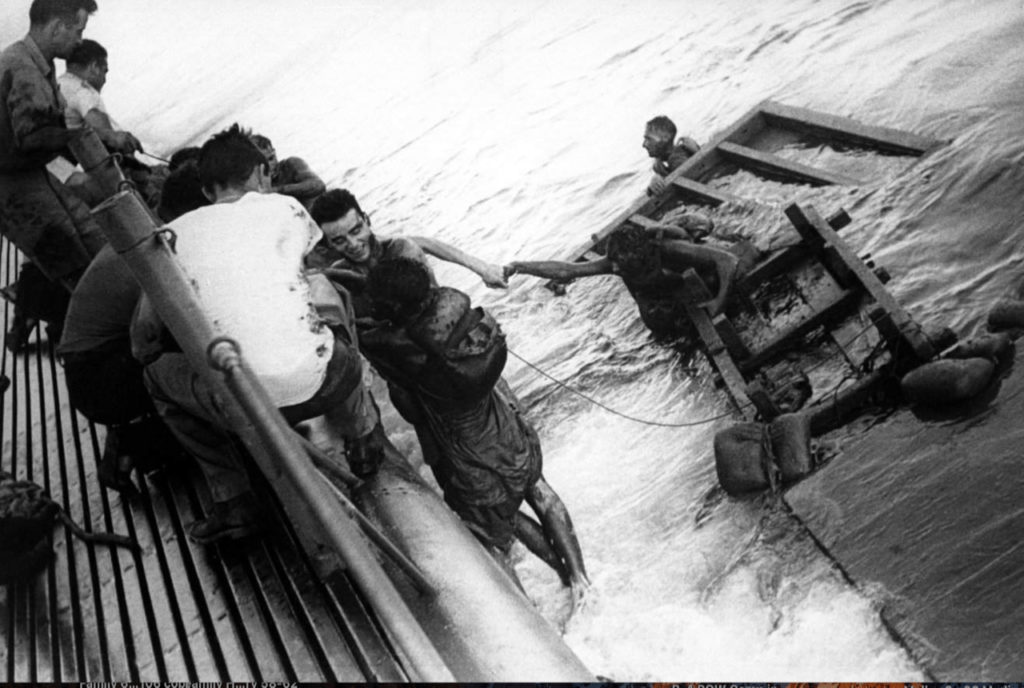
Above: USS Growler
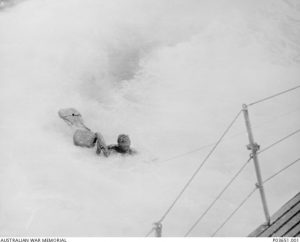
Once the rescued POWs were on taken onto the submarines – so began another emergency. The crew gave up their sleeping areas – these submarines were sleek without any room for guests – and so began the crews’ efforts to not just to keep these men alive but ensure they had the best chance to recover. The submarines did not have extensively trained medical crew.
POWs PICKED UP BY JAPANESE NAVAL CORVETTE
Those Picked up by Japanese Corvette and taken to Japan included three 2/4th men:
On morning 12 September 1944 when the convoy was attacked ‘Rakuyo Maru’ carrying 1,159 British and Australian POWs was sunk by USS ‘Sea Lion and another POW Transport Ship in the convoy ‘Kachidoki Maru’ was sunk by USS ‘Pamanito’ carrying 400 British POWs.
The Kachidoki Maru was hit by a torpedoes from the US submarine Pampanito.Three torpedoes were fired at Kachidoki Maru at 22.40, the target was 3,700 away, two hitting the ship, one at the stern and the other amidships. Both blew holes in the hull plates, flooding the entire aft end of the ship.
Most of those rescued from the Kachidoki Maru were picked up by Japanese trawlers and continued their journey to Japan on the Kibitsu Maru.
‘In total 157 POWs from Rakuyo Maru, 520 POWs from Kachidoki Maru, and about 1,000 survivors of the HI-72 convoy were put aboard Kibitsu Maru. They departed Yulin on the evening of 16 September.‘
‘Bert Wall was one of three rafts tied together with POWs and were picked up by a Japanese Corvette. The men numbering about 80 or 82 had to climb up the side of the moving corvette on a wire rope ladder which the crew had dropped over the side. All the POWs’ managed to climb aboard which was a miracle in itself considering their health and what they had been through. Most POWs were naked or next to naked and were were made to sit on deck up the front. They were given nothing to drink or eat.
Climie, Syd Clayden and Bert Wall were with this above group. Wall went to Sakata where Rowley Richards was the only Australian Doctor amongst about 40 Australians and 200 British – there were some British doctors. Rowley Richards was regarded very highly as a doctor.
Climie and Clayden were sent to Kawasaki Camp 14D – within the Tokyo military jurisdiction.’
The above information is from Bert Wall’s recollections.
Below: Wall, Climie and Clayden

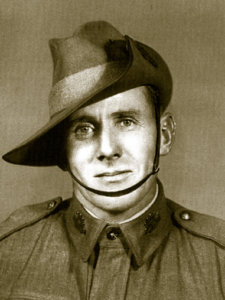
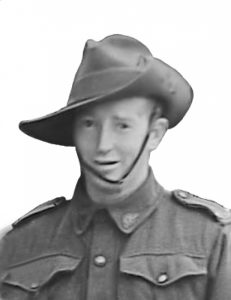
In total 543 Australian POWs lost their lives. 500 from AIF, 33 RAN and 7 RAAF.
We wish to acknowledge the following 38 men of the 2/4th who did not survive to return home to families and loved ones. ** not including Aussie Climie who is listed here.
WX7905 ANNESLEY, Frederick John (28 years)
WX9864 BAGGS, Royal James (34 years)
WX8720 BAKER, Arthur Joseph (30 years)
WX8682 BAKER, William Robert Samuel 25 years)
WX16389 BELL, Robert Joseph (24 years)
WX9326 CARTER, Alfred Henry (24 years)
**WX4927 CLIMIE, Austin Newman (37 years) picked up by Japanese vessel with Bert Wall. Tragically died in Allied air raid in Japanese camp, 13 July 1945.
WX9109 COLQUHOUN, Alexander John (38 years)
WX9092 COUSINS, Arnold Vivian (30 years)
WX15783 CRIPPS, David Charles (22 years)
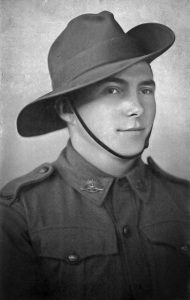
Please read further about Cripps & Randall from Northampton.
WX8011 DELAPORTE, Harry Thomas (30 years)
WX8830 DRUMMOND, Alexander McDougal Donald (33 years)
WX16407 GIBBS, Lacey Gordon (27 years)
WX8958 GIBBS, William Herbert (28 years)
WX10822 HARVEY, Laurence John (24 years)
WX8408 HAYES, Albert George (33 years)
WX10095 HELSIN, John Frederick (25 years)
WX16446 HOBSON, Clifford (38 years)
NX73270 HOWARD, Bernard James (29 years)
WX10795 HUGHES, Ronald Edward (28 years)
WX7646 HUTCHISON, Robert Bamford (32 years)
Read the story of Hutchison and some of his mates
WX5584 MCCRACKEN, Ronald Duncan (24 years)
WX8760 MCMAHON, Thomas Membury (24 years)
WX7662 MINCHIN, Alec Randolph (30 years)
WX8076 MOORE, Frank Clifford (33 years)
WX7181 MUTTON, Charles (31 years)
WX7940 NICHOLSON, Walter George (36 years)
WX7659 NOLAN, Edwin Leslie (34 years)
WX8856 PEARCE, Harry Walter (30 years)
WX16356 RANDALL, Ernest Edward (36 years)
WX9282 SKINNER, Francis Kenneth Herbert (40 years)
WX7337 SPOONER, Alec (33 years)
WX6623 THOMAS, David William (23 years)
WX7664 TOMS, Frederick William (40 years)
WX17863 TRIGWELL, Vernon Chapman (24 years)
Please read the story of Mrs Trigwell and her search for news of her son
WX7484 TUCKER, William John (38 years)
WX9292 VENEMORE, Norman James (28 years)
WX8776 WALSH, Leo Patrick (36 years)
WX9829 WEBB, Frederick William (22 years)
Davey Cripps and Fred Webb were the youngest at 22 years. There were married men with children, some who married before departing Australian and saddest of all, young West Australian men in the prime of their lives who had survived working on Burma end of Thai-Burma Railway with ‘A’ Force, Green Force No. 3 Battalion.
The men of ‘Rakuyo Maru’ party were initially sent to Saigon, French Indo-China where they worked at the wharves, go-downs and nearby airfield. On several occasions the party prepared to leave Saigon – then sent back to their accommodation and work. Finally, their Japanese captors came to the conclusion that no further Japanese shipping departing Saigon would be able to avoid the marauding American submarines. Japan had lost the freedom and use of Saigon Harbour, a valuable shipping port to exit and enter from Japan.
The POWs were then returned by train via Bangkok to Singapore and accommodated at the Transit Camp. Returning to work in Singapore they finally boarded the ‘Rakuyo Maru’ about 4th September 1944.
_________________
Please read story about 75th Anniversary of sinking of Rakuyo Maru and rescue of POWs.
You may wish to read this website Submarine Sailor
Below: Now Released RAN Secret Document
